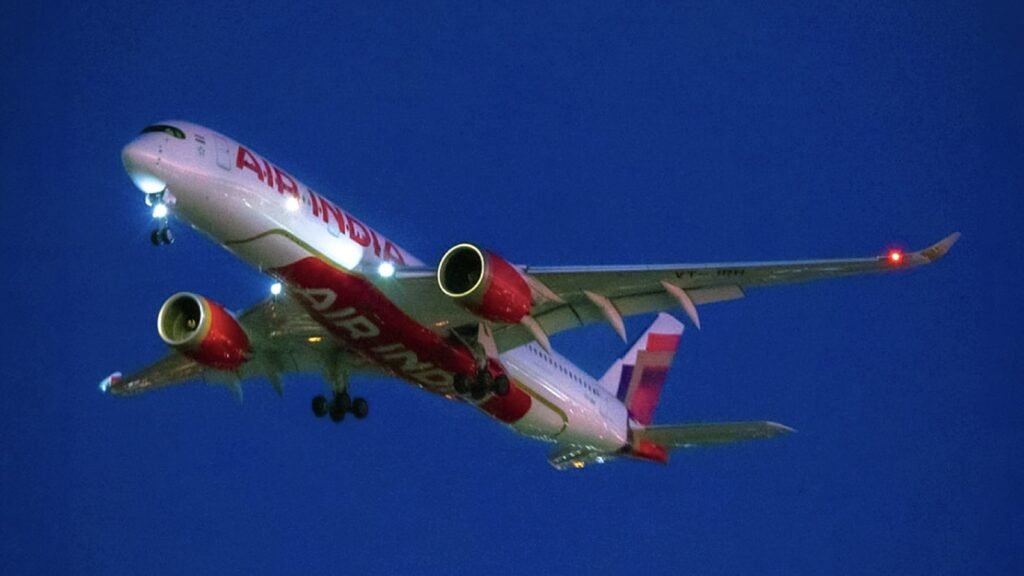Following Pakistan’s decision to extend the closure of its airspace for Indian aircraft and airlines by a month — till the morning of August 24 — India has also announced the extension of its ban on Pakistani airlines and aircraft from entering Indian airspace for the same period, according to a fresh notice to airmen (NOTAM) issued by India’s aviation authorities.
Pakistan had issued its NOTAM on July 18, a few days before the July 24 expiration of the earlier closure notice. After this extension by Pakistan, India was also likely to extend the closure of its airspace for Pakistani airlines and aircraft beyond July 24, when the earlier Indian NOTAM was also set to expire.
Following the Pahalgam terror attack in April, as diplomatic relations between Delhi and Islamabad deteriorated, Pakistan on April 24 shut its airspace to Indian aircraft and Indian airlines for at least a month, banning them from overflying its airspace. On April 30, India, too, closed its airspace to Pakistani aircraft and airlines. Since then, both countries have been extending their airspace closures by issuing NOTAMs on a monthly basis. The two countries have only banned each other’s airlines and aircraft from their respective airspaces, but they remain open for overflying for airlines and aircraft from other countries.
The new NOTAM issued by India is similar to the previous notices, except for the effective duration of airspace closure. India will keep its airspace closed to Pakistani airlines and aircraft, including military flights, till 5:29 India time on August 24. The latest NOTAM from Pakistan on airspace closure has the same expiration date and time.
With the Pakistani airspace not available to them, around 800 flights a week of Indian airlines are being impacted by longer durations, increased fuel burn, and a few other complexities related to crew and flight scheduling, all of which are increasing operational costs for the carriers. Indian airlines’ flights from North India to West Asia, the Caucasus, Europe, the UK, and North America’s eastern region switched from their routine paths to longer routes, adding anywhere between 15 minutes to a few hours to the journey, depending on the distance and the location of the destination.
For Pakistan, however, the impact of India’s airspace closure has been rather insignificant because, unlike India’s booming aviation sector, Pakistan’s struggling flag carrier, Pakistan International Airlines (PIA), has a limited international footprint, and that too largely to the west of the country. According to airline schedule data from Cirium, PIA operates just six flights a week — to and from Kuala Lumpur in Malaysia, from Lahore and Islamabad—that were routinely flying over India.
All major Indian airlines operate international flights to destinations to the west of the country, and many of these flights were routinely overflying Pakistan. Air India operates flights to West Asia, Europe, the UK, and North America. IndiGo operated flights to West Asia, Turkey, the Caucasus, and Central Asia, but had to suspend flights to the Central Asian cities of Almaty and Tashkent from Delhi as they were now outside the operational range of its existing fleet of narrow-body aircraft. Air India Express, Akasa Air, and SpiceJet’s west-bound international flights are to destinations in West Asia.
Story continues below this ad
According to data from Cirium, an aviation analytics company, currently there are almost 400 weekly westward international departures from North Indian airports — Delhi, Amritsar, Jaipur, and Lucknow — that were routinely flying over Pakistan. Given that all these flights have return legs, the total number of affected flights goes up to around 800 from these airports. Of these, around 640 flights are from or to India’s largest airport — Delhi’s Indira Gandhi International airport — which is likely to be the most affected due to the move by Pakistan. Additionally, a handful of ultra-long-haul flights from other Indian cities like Mumbai are also getting impacted as their flight paths used to go through the Pakistani airspace.
When Pakistan closed its airspace for over four months in 2019, Indian airlines are estimated to have lost around Rs 700 crore due to higher fuel expenses and operational complications that came with longer routes many of their flights were forced to take. Air India was the worst affected Indian carrier at the time, as it operated more west-bound international flights than other airlines.
Moreover, it was and continues to be the only Indian airline that operates ultra-long-haul flights to North America. Air India, now a Tata group entity, is understood to have informed the government that the Pakistani airspace closure is estimated to cost the airline around $600 million on an annualised basis. Over the past few years, other Indian airlines —particularly IndiGo — have also expanded their international networks to include various destinations that can be served by their existing fleets that mainly comprises narrow-body jets. IndiGo is the only Indian airline that was flying to destinations in Central Asia, the Caucasus, and Turkey.

